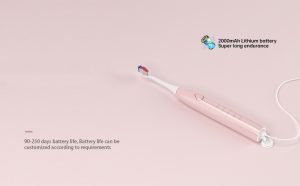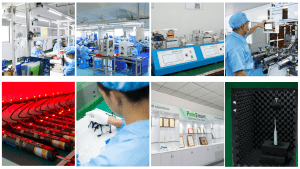Water flossers, also known as oral irrigators, are gaining popularity as an essential tool for oral hygiene. To ensure they perform effectively and safely, manufacturers must implement a rigorous water flosser manufacturing process that includes stringent water flosser quality control and a comprehensive oral irrigator inspection process. In this blog, as a professional water flosser manufacturer, Powsmart will explore the key steps involved in ensuring the quality of water flossers and how these processes contribute to product reliability and customer satisfaction.
Water Flosser Manufacturing: From Design to Production
The water flosser manufacturing process begins with design and development, followed by the sourcing of high-quality materials. The production of a water flosser typically involves multiple stages, including molding, assembly, and component integration. At each stage, We ensure that the design specifications and quality standards are strictly adhered to. For example, the motor’s performance, water pressure consistency, and battery efficiency must meet industry standards.
Water Flosser Quality Control: Ensuring Durability and Safety
Effective water flosser quality control is essential to guarantee the product’s durability and safety for consumers. We performed quality control checks at various stages of production, from the testing of individual components to the final product inspection. Common tests include:
- Performance testing: Ensuring that the water flosser delivers adequate pressure and water flow as per specifications.
- Safety testing: Verifying that the electrical components meet safety standards, especially when in contact with water.
- Durability testing: Checking the water flosser’s lifespan and functionality under regular usage conditions.
By focusing on these areas, we can reduce the risk of defects and ensure that all of our products are safe and reliable for end users.

Oral Irrigator Inspection Process: Detailed Quality Checks
The oral irrigator inspection process is a critical part of ensuring each unit meets the required standards before reaching the consumer. This process typically includes:
- Visual inspection: Checking for any visible defects or cosmetic issues, such as cracks or discoloration on the casing or nozzle.
- Functional testing: Verifying that the water flosser works as intended, including checking that the water spray is uniform and the pressure settings function correctly.
- Leakage testing: Ensuring that no water leaks from the unit, which could potentially cause electrical malfunctions or damage.
These inspections normally use automated systems and manual checks to catch any potential defects that could affect performance or safety.
Continuous Improvement and Post-Production Quality Checks
To maintain high standards, we regularly review and update the water flosser manufacturing and quality control processes. Feedback from consumers and retailers is often analyzed to identify recurring issues or areas for improvement. Additionally, after production, we also conduct further tests to ensure that products shipped to the market meet customer expectations. For example, third-party testing or certification may be used to validate product claims and reinforce trust with consumers.
Conclusion
The water flosser quality control and oral irrigator inspection process are vital components in the production of high-quality oral care devices. By implementing comprehensive testing and quality assurance at every stage of water flosser manufacturing, manufacturers can ensure products are safe, reliable, and meet consumer needs. Powsmart is a manufacturer & factory covering sonic toothbrush, water flosser and teeth whitening kit, offering OEM/ODM service for over 20 years. Contact us if you want to customize your own private label water flosser.





